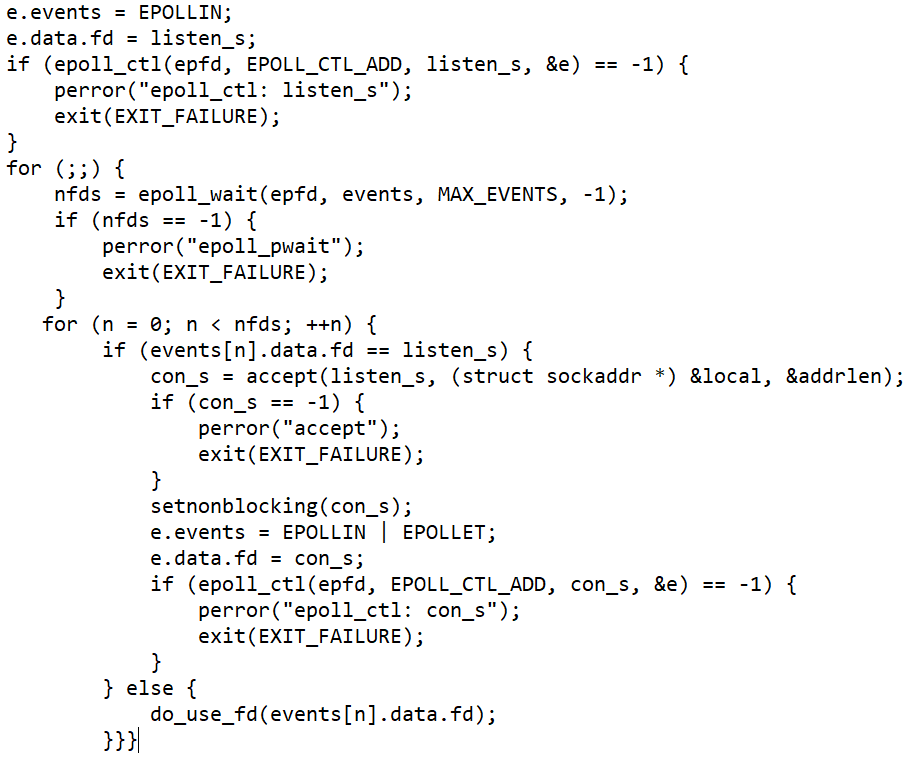Epoll 7 C Function
The epoll entity, an in-kernel information model that may be seen from the user-space as a wrapper for two sets, serves as the foundational idea of the epoll API. Within this guide, we’ll discuss the use of the epoll function in the C language.
- Interest List: The interest group, also known as the epoll collection, is the collection of document descriptors that the procedure has indicated that it is interested in keeping track of. The collection of document descriptors that seem to be “ready” for I/O is known as the all-set queue.
- Ready List: The collection of document identifiers that are “prepared” for I/O is known as the “ready list.” The document identifiers in the interest list are a subgroup of (or, more correctly, a collection of pointers to) the ready list. The kernel uses I/O operations on such document descriptors to periodically fill the ready list.
The following system functions are available to build and administer an epoll object:
- Epoll_create(2): The epoll create(2) function starts a new instance of the epoll service and returns a file descriptor. (The more modern epoll create1 (2) expands on epoll create (2) (capability).)
- Epoll_ctl(2): Contributes things to the epoll object’s interest list and is then used to enroll the interest in specific document descriptors.
- Epoll_wait(2): If there are no I/O activities present at the moment, epoll wait(2) blocks the thread that called it. (This system call may be viewed as collecting things from the epoll object’s ready list.)
Level-Triggered and Edge-Triggered
Edge-Triggered (ET) and Level-Triggered (LT) behaviors are both possible for the epoll incident circulation interface (LT). The two methods’ differences can be summarized as follows. Suppose the following transpires:
- The read side of a pipe’s document descriptor (RFD) is enrolled on the epoll object.
- A total of 2 KB content being written on the writing wall of the container by a pipe author.
- A request to epoll wait(2) is made, and RFD, a prepared file handle, is returned.
- From the RFD, the pipeline reader will read 1 kilobyte of content.
- An epoll_wait(2) function call is made.
The request to epoll_wait(2) made in step 5 will likely stall if the RFD document handle has been assigned to the epoll protocol with the EPOLLET (edge-triggered) signal. In the meantime, the remote partner could be anticipating a reaction depending on the content it already supplied. This is because the edge-triggered option only sends signals whenever the observed document descriptor undergoes modifications.
Therefore, the caller function may even have to be put on hold for a certain information which is already in the buffer cache in phase 5. In the aforementioned example, the write in 2 may trigger an activity to be created on the RFD, and the incident will be received in 3. The call to epoll_wait(2) in step 5 may become stuck because the read activity in step 4 did not use all of the buffer information.
To prevent a stalling read or write from depleting a job that is managing the various file descriptors, a program that uses the EPOLLET option should be using the non-blocking document descriptors. The following is a recommended procedure for using the epoll as an edge-triggered (EPOLLET) interface:
- Non-blocking document descriptors, and
- Just after read(2) or write(2), deliver EAGAIN by going to wait for an action.
Epoll, on the other hand, is just a quicker version of poll(2) and may be used everywhere poll(2) is used since it has the identical logic whenever it is seen as a level-triggered protocol (the standard whenever EPOLLET is not given). The caller function has the choice to supply the EPOLLONESHOT signal to instruct the epoll to shut the linked file descriptor when receiving an occurrence with epoll_wait. Meanwhile, even with edge-triggered epoll, many actions can be created upon reception of the several sets of information (2). The caller really must redeploy the document descriptor with the epoll_ctl(2) and EPOLL_CTL_MOD whenever the EPOLLONESHOT flag is given.
Example:
Although the logic of epoll when used as a threshold API is identical to those of poll(2), the edge-triggered behavior use calls for greater explanation to prevent the delays in the program event queue. The listener in this illustration is a non-blocking socket upon which the listen(2) function is invoked. Before EAGAIN is given either by read(2) or write() function, the method use the fd() function to maintain the new ready file descriptor (2). An event-driven state machine app might as well save its present state after receiving EAGAIN so that it could resume reading or writing at the previous point when fd() is called again. Check out the affixed code here:

In order to improve efficiency, the file descriptor may only be added once within the epoll interface (EPOLL CTL ADD) by designating (EPOLLIN|EPOLLOUT) as an edge-triggered interface. By running the epoll ctl (2) with EPOLL CTL MOD, you may avoid the constant shifting among EPOLLIN and EPOLLOUT. The remaining code for this illustration is appended in the following image:

Conclusion:
This is about the use of the epoll 7 C function in the Ubuntu 20.04 Linux operating system to perform the socket programming. We discussed how an epoll() 7 C function can be used to check the feasibility of the various file descriptors to determine whether the input and output they contain are viable or not, both from the server and client side.
Source: linuxhint.com
